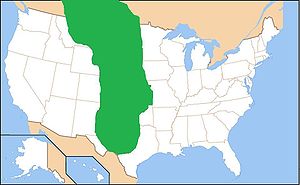
In agriculture, milpa is a field for growing food crops and a crop-growing system used throughout Mesoamerica, especially in the Yucatán peninsula, in Mexico. The word milpa derives from the Nahuatl phrase mil-pa. Based on the agronomy of the Maya and of other Mesoamerican peoples, the milpa system is used to produce crops of maize, beans, and squash without employing artificial pesticides and artificial fertilizers.

Agriculture in Mesoamerica dates to the Archaic period of Mesoamerican chronology. At the beginning of the Archaic period, the Early Hunters of the late Pleistocene era led nomadic lifestyles, relying on hunting and gathering for sustenance. However, the nomadic lifestyle that dominated the late Pleistocene and the early Archaic slowly transitioned into a more sedentary lifestyle as the hunter gatherer micro-bands in the region began to cultivate wild plants. The cultivation of these plants provided security to the Mesoamericans, allowing them to increase surplus of "starvation foods" near seasonal camps; this surplus could be utilized when hunting was bad, during times of drought, and when resources were low. The cultivation of plants could have been started purposefully, or by accident. The former could have been done by bringing a wild plant closer to a camp site, or to a frequented area, so it was easier access and collect. The latter could have happened as certain plant seeds were eaten and not fully digested, causing these plants to grow wherever human habitation would take them.
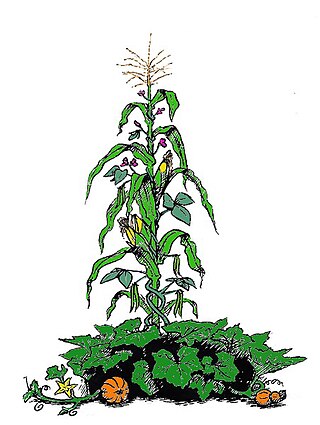
The Three Sisters are the three main agricultural crops of various Indigenous peoples of North America: squash, maize ("corn"), and climbing beans. In a technique known as companion planting, the maize and beans are often planted together in mounds formed by hilling soil around the base of the plants each year; squash is typically planted between the mounds. The cornstalk serves as a trellis for climbing beans, the beans fix nitrogen in their root nodules and stabilize the maize in high winds, and the wide leaves of the squash plant shade the ground, keeping the soil moist and helping prevent the establishment of weeds.

The Wichita people or Kitikiti'sh are a confederation of Southern Plains Native American tribes. Historically they spoke the Wichita language and Kichai language, both Caddoan languages. They are indigenous to Oklahoma, Texas, and Kansas.

Plains Indians or Indigenous peoples of the Great Plains and Canadian Prairies are the Native American tribes and First Nation band governments who have historically lived on the Interior Plains of North America. While hunting-farming cultures have lived on the Great Plains for centuries prior to European contact, the region is known for the horse cultures that flourished from the 17th century through the late 19th century. Their historic nomadism and armed resistance to domination by the government and military forces of Canada and the United States have made the Plains Indian culture groups an archetype in literature and art for Native Americans everywhere.

Agriculture began independently in different parts of the globe, and included a diverse range of taxa. At least eleven separate regions of the Old and New World were involved as independent centers of origin. The development of agriculture about 12,000 years ago changed the way humans lived. They switched from nomadic hunter-gatherer lifestyles to permanent settlements and farming.
The Archaic Southwest was the culture of the North American Southwest between 6500 BC and 200 AD (approximately).

The Eastern Agricultural Complex in the woodlands of eastern North America was one of about 10 independent centers of plant domestication in the pre-historic world. Incipient agriculture dates back to about 5300 BCE. By about 1800 BCE the Native Americans of the woodlands were cultivating several species of food plants, thus beginning a transition from a hunter-gatherer economy to agriculture. After 200 BCE when maize from Mexico was introduced to the Eastern Woodlands, the Native Americans of the eastern United States and adjacent Canada slowly changed from growing local indigenous plants to a maize-based agricultural economy. The cultivation of local indigenous plants other than squash and sunflower declined and was eventually abandoned. The formerly domesticated plants returned to their wild forms.

The Grand Village of the Illinois, also called Old Kaskaskia Village, is a site significant for being the best documented historic Native American village in the Illinois River valley. It was a large agricultural and trading village of Native Americans of the Illinois confederacy, located on the north bank of the Illinois River near the present town of Utica, Illinois. French explorers Louis Joliet and Father Jacques Marquette came across it in 1673. The Kaskaskia, a tribe of the Illiniwek people lived in the village. It grew rapidly after a French mission and fur trading post were established there in 1675, to a population of about 6,000 people in about 460 houses. Around 1691 the Kaskaskia and other Illiniwek moved further south, abandoning the site due to pressure from an Iroquois invasion from the northeast.
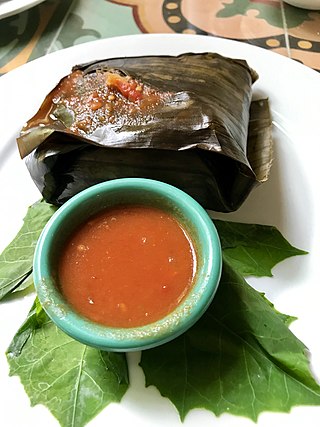
Ancient Maya cuisine was varied and extensive. Many different types of resources were consumed, including maritime, flora, and faunal material, and food was obtained or produced through strategies such as hunting, foraging, and large-scale agricultural production. Plant domestication concentrated upon several core foods, the most important of which was maize.

The archaeology of Iowa is the study of the buried remains of human culture within the U.S. state of Iowa from the earliest prehistoric through the late historic periods. When the American Indians first arrived in what is now Iowa more than 13,000 years ago, they were hunters and gatherers living in a Pleistocene glacial landscape. By the time European explorers visited Iowa, American Indians were largely settled farmers with complex economic, social, and political systems. This transformation happened gradually. During the Archaic period American Indians adapted to local environments and ecosystems, slowly becoming more sedentary as populations increased. More than 3,000 years ago, during the Late Archaic period, American Indians in Iowa began utilizing domesticated plants. The subsequent Woodland period saw an increase on the reliance on agriculture and social complexity, with increased use of mounds, ceramics, and specialized subsistence. During the Late Prehistoric period increased use of maize and social changes led to social flourishing and nucleated settlements. The arrival of European trade goods and diseases in the Protohistoric period led to dramatic population shifts and economic and social upheaval, with the arrival of new tribes and early European explorers and traders. During the Historical period European traders and American Indians in Iowa gave way to American settlers and Iowa was transformed into an agricultural state.
Indigenous horticulture is practised in various ways across all inhabited continents. Indigenous refers to the native peoples of a given area and horticulture is the practice of small-scale intercropping.
The Antelope Creek Phase was an American Indian culture in the Texas Panhandle and adjacent Oklahoma dating from AD 1200 to 1450. The two most important areas where the Antelope Creek people lived were in the Canadian River valley centered on present-day Lake Meredith near the city of Borger, Texas and the Buried City complex in Wolf Creek valley near the town of Perryton, Texas. Settlements are also found in Oklahoma near the town of Guymon and along the Beaver River.
La Junta Indians is a collective name for the various Indians living in the area known as La Junta de los Rios on the borders of present-day West Texas and Mexico. In 1535 Alvar Nunez Cabeza de Vaca recorded visiting these peoples while making his way to a Spanish settlement. They cultivated crops in the river floodplains, as well as gathering indigenous plants and catching fish from the rivers. They were part of an extensive trading network in the region. As a crossroads, the area attracted people of different tribes.
As is the case with most native populations that did not use systems of writing for most or all of their history, much of what is known about Native Americans comes from the records of the Europeans who first encountered them in the late 16th and early 17th centuries. Some of these accounts are accurate, while some include parts that are accurate and other parts that reflect their biases towards native peoples. One aspect of native life which the European colonists often remarked upon, when they left written records, was their system of agriculture.

The agricultural practices of the Native Americans inhabiting the American Southwest, which includes the states of Arizona and New Mexico plus portions of surrounding states and neighboring Mexico, are influenced by the low levels of precipitation in the region. Irrigation and several techniques of water harvesting and conservation were essential for successful agriculture. To take advantage of limited water, the southwestern Native Americans utilized irrigation canals, terraces (trincheras), rock mulches, and floodplain cultivation. Success in agriculture enabled some Native Americans to live in communities which numbered in the thousands as compared to their former lives as hunter-gatherers in which their bands numbered only a few dozen.
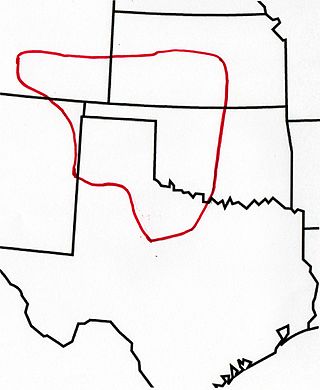
The Southern Plains villagers were semi-sedentary Native Americans who lived on the Great Plains in western Oklahoma, Texas, Kansas, and southeastern Colorado from about AD 800 until AD 1500.
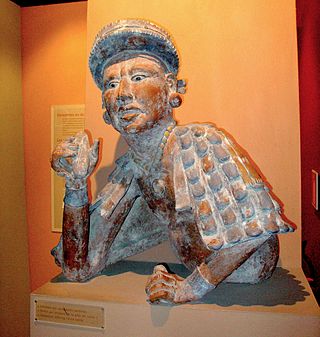
Pre-Columbian cuisine refers to the food and drink consumed by the people who inhabited the Americas before Christopher Columbus explored the region and introduced food and crops from Europe. Though the Columbian Exchange introduced many new animals and plants to the Americas, cultures of their own already existed there, including the Aztec, Maya, Incan, and Native American. The development of agriculture allowed the many different cultures to transition from hunting to staying in one place. A major element of this cuisine is maize, which began being grown in central Mexico. Other crops that flourished in the Americas include amaranth, wild rice, and lima beans.
The Oak Forest Site (11Ck-53) is located in Oak Forest, Cook County, Illinois, near the city of Chicago. It is classified as a late prehistoric to Protohistoric/Early Historic site with Upper Mississippian Huber affiliation.

The Pernil Alto archaeological site is located in Rio Grande District of Palpa province in the Ica Region of Peru. Although the site was occupied earlier, archaeologists traced the adoption of agriculture by the inhabitants from about 3800 BCE to 3000 BCE. The excavators cite radiocarbon dates which establish Pernil Alto as the oldest known inland and sedentary agricultural village in the Central Andes of Peru and Bolivia. The date at which agriculture became the main source of subsistence for the inhabitants of Pernil Alto was 3300 BCE.

